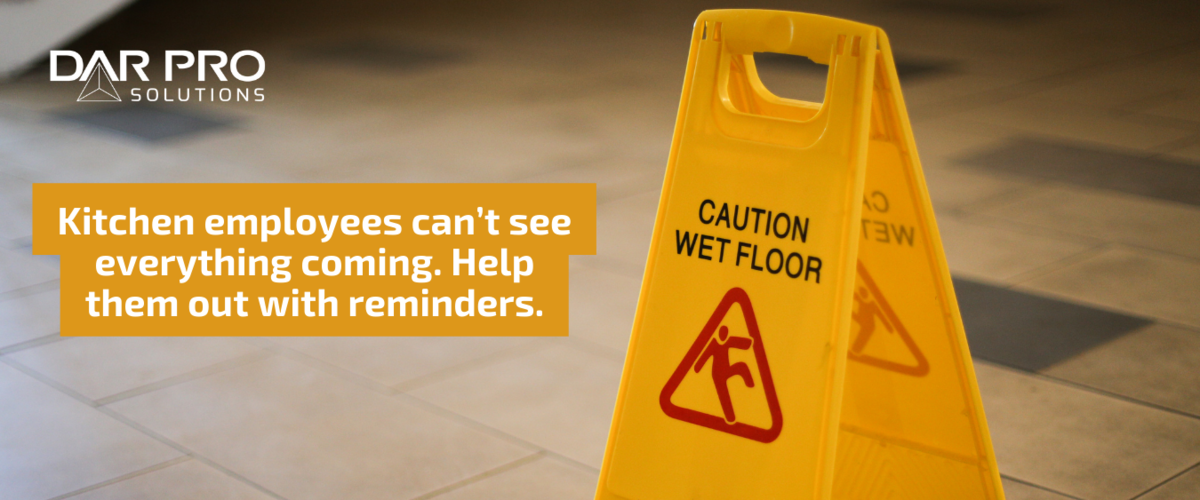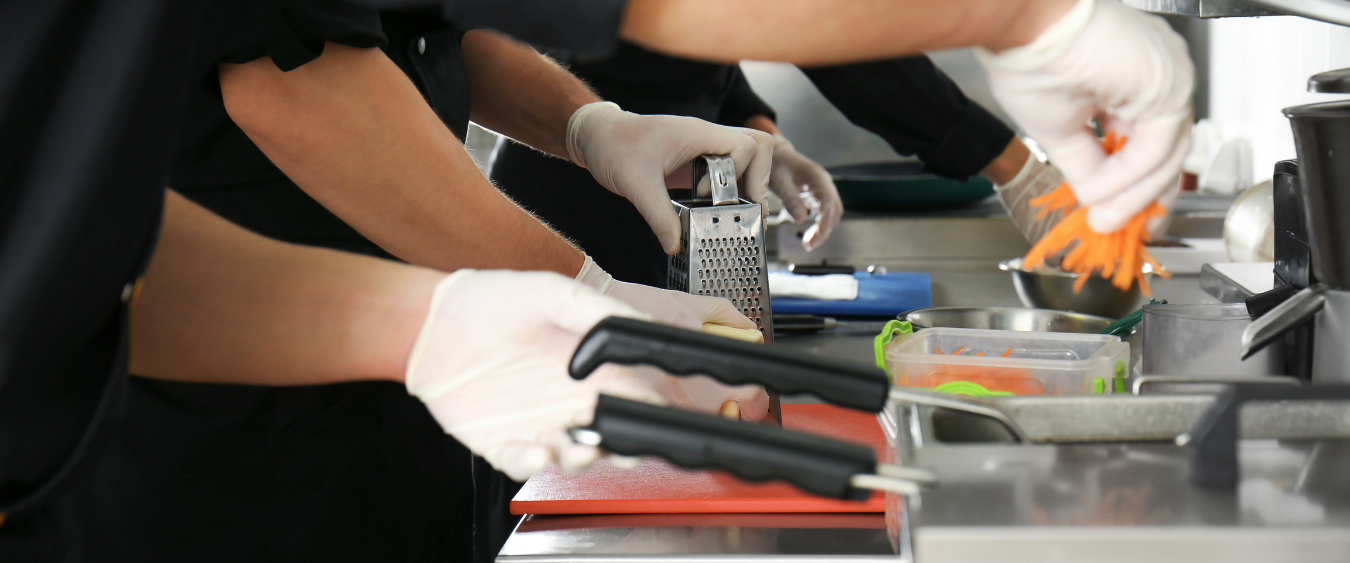1. Kitchen equipment
Kitchens are filled with equipment and tools that are designed to heat, fry, cut, and chop up ingredients to make the various dishes on the menu. These are of course a necessary part of the process, but they are also potentially hazardous if proper precautions are not taken.
Proper use of grills, fryers and cookers
Making sure your employees are using the cooking equipment as it's designed and in a safe manner is a key step in reducing hazards in your kitchen. Clearly state a set of best practices when it comes to operating fryers and grills, like never filling fryer baskets more than half full or a reminder not to stand too close to or lean over hot oil. Only use equipment at manufacturer-recommended temperatures and ensure adequate protective equipment is worn when using all cooking equipment.

Install safe and efficient used cooking oil disposal equipment
All that used cooking oil must go somewhere. Rather than have your employees haul a pot of hot oil outside to an outdoor container, invest in an automated used cooking oil recycling system to reduce liability. It simplifies the oil transfer process down to one flip of a switch and eliminates your staff encountering hot used cooking oil.
Good knife etiquette
Knives are sharp. When used correctly, it’s safest to keep them that way. Keep knives well maintained and sharp. dull blades will more easily slip off food and into your finger. Make sure employees know how to select the correct knife for the job and to cut away from their body when trimming. Knives should be easy to use and easy to grip, and when finished using, they should not be left out, but instead washed and immediately returned to storage holders such as a bag or magnetic strip directly after use. And lastly, always point the knife downward when walking with it.
Post clear warnings and quality training
Thorough training is the best preventative measure for reducing hazards when it comes to using restaurant equipment. Make sure you provide clear warnings to employees of the hazards of not using incorrect use and safety guards, or of allowing loose clothing to get caught in machinery. Keep safety manuals for kitchen equipment in a designated place so that employees can refer to them if they have any questions or concerns. Post signage near equipment with short, brief warnings on most dangerous parts and proper use.

2. Employee Personal Protective Equipment (PPE)
Make sure your employees have the protective gear and tools to remain safe while doing their jobs. Start with the uniform and gear.
Stock plenty of protective gear
Mandate that all staff members using grills, fryers or other cooking equipment wear heat heat-resistant clothing. All employees in the kitchen should wear slip-resistant shoes with little to no heel so that they remain stable-footed should they encounter a slippery area of the floor.
Gloves and hairnets are both a sanitary and protective measure when it comes to your staff handling food and equipment, including potholders, gloves and oven mitts appropriate for handling hot objects. It is also usually a good idea to have a limited or no jewelry policy while working in the kitchen.
Invest in safety tools
Protecting your employees goes beyond just the uniform and gear. Put tools in place to help them do their job safely and more efficiently. Have several step ladders and stools, placed and used in areas around shelves and higher-up places that are difficult to reach. Make sure it’s also an area with firm, consistent footing.
Knife casings, sharpeners and cutting boards are just as important as educating your staff on knife good etiquette. Make sure your matting is free of holes, loose ends and is securely placed in areas that are prone to being slippery. Always have a mop, broom, dustpan and whatever else is needed to quickly clean up a mess.
3. Kitchen design and layout
The design of the kitchen itself can help reduce hazards. Space is limited in a crowded kitchen, which means the design and layout is even more important. The details matter, and foresight in the kitchen design and layout process can prevent hazards.
Install quality lighting
Compromised vision is a surefire way to attract a hazardous situation. Make sure your restaurant and kitchen is well-lit in all areas, but particularly in places with stairs, height changes and congested parts of the kitchen. Make sure storage closets and containers have lighting so employees are not searching and reaching for things in the dark. Better lighting helps identify hazards and spills in walking areas. The more the staff can see and the better they have can help them detect and avoid a potential hazard.

Post detailed signage
Kitchen employees can’t see everything coming. Help them out with reminders via thorough signage. Have plenty of wet floor signs. Walk, don’t run reminders are always a step toward safety. Spills and collisions around busy doorways are common in restaurants. Place signs reminding staff members of the opening pattern, whether it is in, out or revolving. Signage for fire alarm, fire extinguisher, fire exits and any other places used in the case of an emergency is also never a bad route to go.
Be smart with your restaurant layout
Don’t make your kitchen more crowded and congested than it already is. An efficient layout will make your kitchen flow easier, which will in turn reduce the potential for hazards. Make sure everyone who frequents your kitchen needs to be there. Having only a necessary amount of people in the kitchen at one time will reduce overcrowding and collisions. Keep walkways and busy areas around the entrances and exits clear of any debris or unnecessary foot traffic.
Avoid boxes and equipment being stored on the floor or against walls. Have an in-and-out route in terms of walking in or out of the kitchen. Identify fire exits, what to do and where to go in the event of a fire.
Take these safety tips and make your restaurant kitchen safer
Implementing these practices in your commercial kitchen should give you an idea of where to look when it comes to opportunities for safety hazard reduction in your kitchen. Being proactive in your approach to hazard reduction will mitigate risk and make your kitchen a safer place to work.
These guidelines are meant to be general best practices. This information is not legal advice and should not be interpreted as such. DAR PRO is not responsible for any actions taken based on the information contained herein. You should follow your standard operating procedures and kitchen protocols.
DAR PRO Solutions provides safe, efficient used cooking oil recycling solutions to commercial kitchens across North America. Our program reduces hazards within commercial kitchens. Reach out to a DAR PRO representative today and find out how your business can benefit from our program. Call us 24/7/365 at 855-DAR-PRO1 (855-327-7761).
Contact Sales
For customer service inquiries call our toll free number (855) 327-7761
By submitting this form I agree to the privacy policy including the usage of contact details to contact me for marketing purposes.
